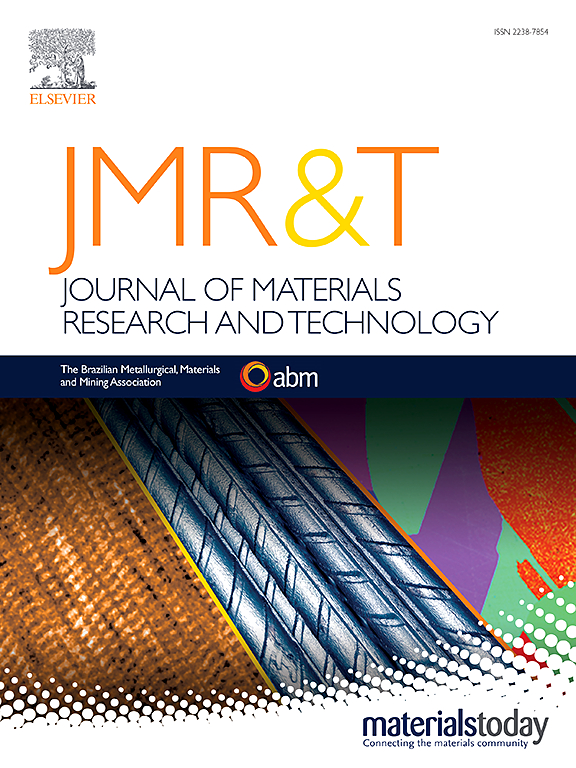Green manufacturing impact on fatigue strength: A comparative analysis of heat-treated AISI 420 and plastically deformed AISI 301LN stainless steels
IF 6.2
2区 材料科学
Q1 MATERIALS SCIENCE, MULTIDISCIPLINARY
Journal of Materials Research and Technology-Jmr&t
Pub Date : 2025-03-11
DOI:10.1016/j.jmrt.2025.03.087
引用次数: 0
Abstract
The demand for sustainable and high-performance materials has driven advancements in stainless steel production, including the development of "green stainless steels" that reduce environmental impact without compromising mechanical properties. Traditional steelmaking emits approximately 1.8 tons of CO2 per ton of steel, whereas the green manufacturing process used in this study replaces coke with sustainably sourced charcoal, significantly lowering emissions while capturing CO2.
This study investigates the fatigue behavior of two green high-strength martensitic stainless steels (HSMSS), AISI 420 and AISI 301LN, which differ in composition, microstructure, and processing. AISI 420 underwent quenching and tempering (QT) to achieve a predominantly martensitic structure, while AISI 301LN, a TRIP steel, was cold-rolled with 54 % thickness reduction, inducing partial martensitic transformation. Despite their similar ultimate tensile strength (σUTS ∼1530 MPa), hardness (∼46 HRC), and surface roughness, their fatigue resistance differed significantly.
Through X-ray diffraction (XRD), optical microscopy (OM), scanning electron microscopy (SEM), and Electron Backscatter Diffraction (EBSD), this study explores how distinct processing routes influence microstructural evolution and fatigue performance. The results provide insights into how sustainable manufacturing methods contribute to fatigue resistance while addressing environmental concerns.
求助全文
约1分钟内获得全文
求助全文
来源期刊

Journal of Materials Research and Technology-Jmr&t
Materials Science-Metals and Alloys
CiteScore
8.80
自引率
9.40%
发文量
1877
审稿时长
35 days
期刊介绍:
The Journal of Materials Research and Technology is a publication of ABM - Brazilian Metallurgical, Materials and Mining Association - and publishes four issues per year also with a free version online (www.jmrt.com.br). The journal provides an international medium for the publication of theoretical and experimental studies related to Metallurgy, Materials and Minerals research and technology. Appropriate submissions to the Journal of Materials Research and Technology should include scientific and/or engineering factors which affect processes and products in the Metallurgy, Materials and Mining areas.
 求助内容:
求助内容: 应助结果提醒方式:
应助结果提醒方式:


